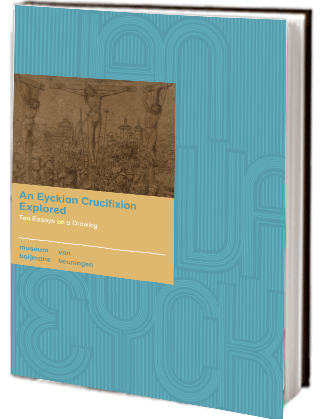
In this book, leading specialists examine an alleged work by Van Eyck to determine its authenticity.
Buy NowThis focus exhibition presents the findings of a recent study of the Crucifixion and Last Judgment paintings (ca. 1440–41) by Jan van Eyck and his workshop. These paintings and their frames have undergone technical investigations in an effort to solve long-standing mysteries about them. Whether the paintings were always intended as a diptych, or whether they were originally the wings of a triptych or the doors of a tabernacle, has been in question. The answer may be found not only in a closer look at the frames, but also in the relationship of the Metropolitan's Crucifixion painting to a recently rediscovered drawing of the Crucifixion attributed to Jan van Eyck (ca. 1390–1441) that has been acquired by the Boijmans Van Beuningen Museum in Rotterdam, and is also on view in the exhibition.
New infrared reflectography now affords an opportunity to compare the underdrawings of the Crucifixion and Last Judgment paintings with the Rotterdam drawing. In addition, X-radiography of the paintings' frames has revealed another text, albeit very damaged and fragmentary, on the flat part of the frame beneath the gold overpaint. The text is in Flemish, in Gothic minuscule script, as opposed to the Latin pastiglia (raised lettering) on the interior cove of the two frames. This introduces new clues regarding the original form and function of the two paintings, as the exhibition demonstrates.
Jan van Eyck (Netherlandish, ca. 1390–1441). The Crucifixion (detail), ca. 1440–41. Oil on canvas, transferred from wood; Each 22 1/4 x 7 2/3 in. (56.5 x 19.7 cm). The Metropolitan Museum of Art, New York, Fletcher Fund, 1933 (33.92ab)